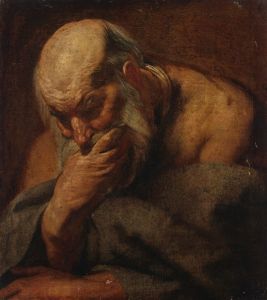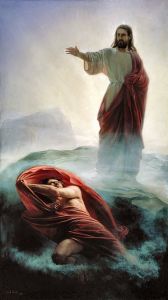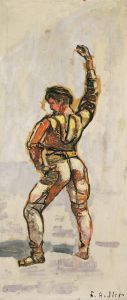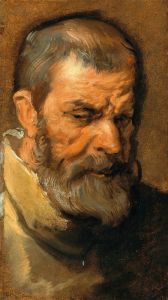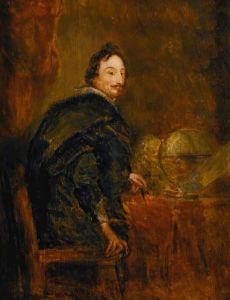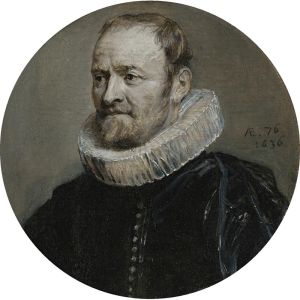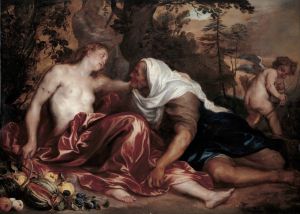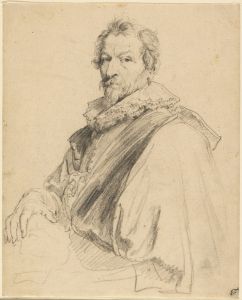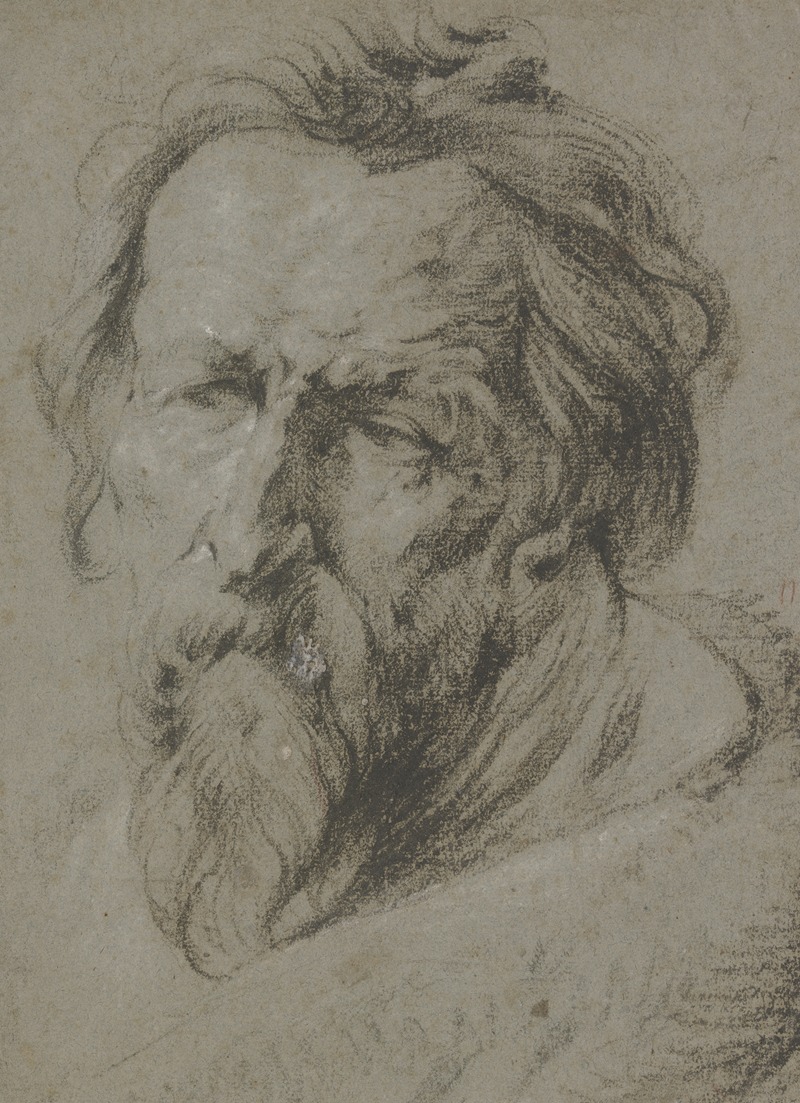
Kopf eines bärtigen Alten nach links
A hand-painted replica of Anthony van Dyck’s masterpiece Kopf eines bärtigen Alten nach links, meticulously crafted by professional artists to capture the true essence of the original. Each piece is created with museum-quality canvas and rare mineral pigments, carefully painted by experienced artists with delicate brushstrokes and rich, layered colors to perfectly recreate the texture of the original artwork. Unlike machine-printed reproductions, this hand-painted version brings the painting to life, infused with the artist’s emotions and skill in every stroke. Whether for personal collection or home decoration, it instantly elevates the artistic atmosphere of any space.
"Kopf eines bärtigen Alten nach links" (Head of a Bearded Old Man Facing Left) is a painting by the renowned Flemish Baroque artist Anthony van Dyck. Van Dyck, born on March 22, 1599, in Antwerp, was a prominent painter known for his portraits and religious works. He was a leading court painter in England and had a significant influence on the portraiture of the 17th century.
This particular work, "Kopf eines bärtigen Alten nach links," is a study of an elderly man with a beard, facing left. The painting is a fine example of van Dyck's skill in capturing the human face with remarkable detail and emotional depth. The subject's expression, the texture of his beard, and the subtle play of light and shadow on his face demonstrate van Dyck's mastery in rendering lifelike portraits.
Van Dyck's technique often involved a loose, yet precise brushwork that allowed him to convey the character and mood of his subjects effectively. In this painting, the use of chiaroscuro (the contrast between light and dark) is evident, highlighting the contours of the man's face and giving a three-dimensional quality to the portrait. The background is typically kept simple, ensuring that the viewer's focus remains on the subject's face.
The painting is believed to have been created during van Dyck's mature period, a time when he had fully developed his distinctive style. This period was marked by his travels across Europe, including Italy, where he studied the works of great masters like Titian and Rubens. These influences are reflected in his approach to portraiture, combining the grandeur of the Baroque style with a keen observation of human nature.
Van Dyck's portraits were highly sought after by the European aristocracy, and he became the principal court painter to King Charles I of England in 1632. His work during this time solidified his reputation as one of the leading portraitists of his era. "Kopf eines bärtigen Alten nach links" is a testament to his ability to capture the essence of his subjects, making them appear both dignified and approachable.
The painting is part of a larger body of work that includes numerous studies and sketches of heads, which van Dyck often used as preparatory works for his larger compositions. These studies were crucial in helping him refine his technique and achieve the lifelike quality that characterizes his portraits.
Today, "Kopf eines bärtigen Alten nach links" is appreciated not only for its artistic merit but also as a valuable historical document that provides insight into the techniques and practices of one of the Baroque period's most influential artists. It remains an important piece in the study of van Dyck's oeuvre and the broader context of 17th-century European art.
In summary, Anthony van Dyck's "Kopf eines bärtigen Alten nach links" is a masterful study that exemplifies his skill in portraiture, his use of light and shadow, and his ability to convey the character and emotion of his subjects. It stands as a significant work within his extensive and influential career.





